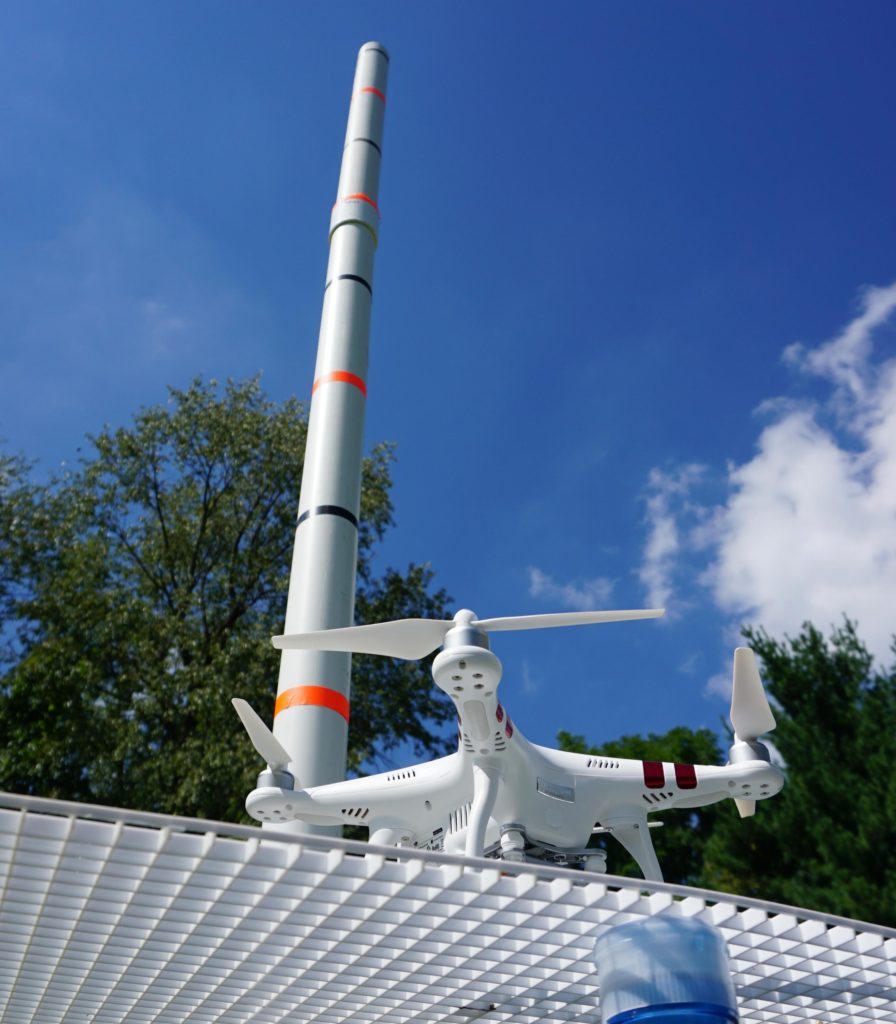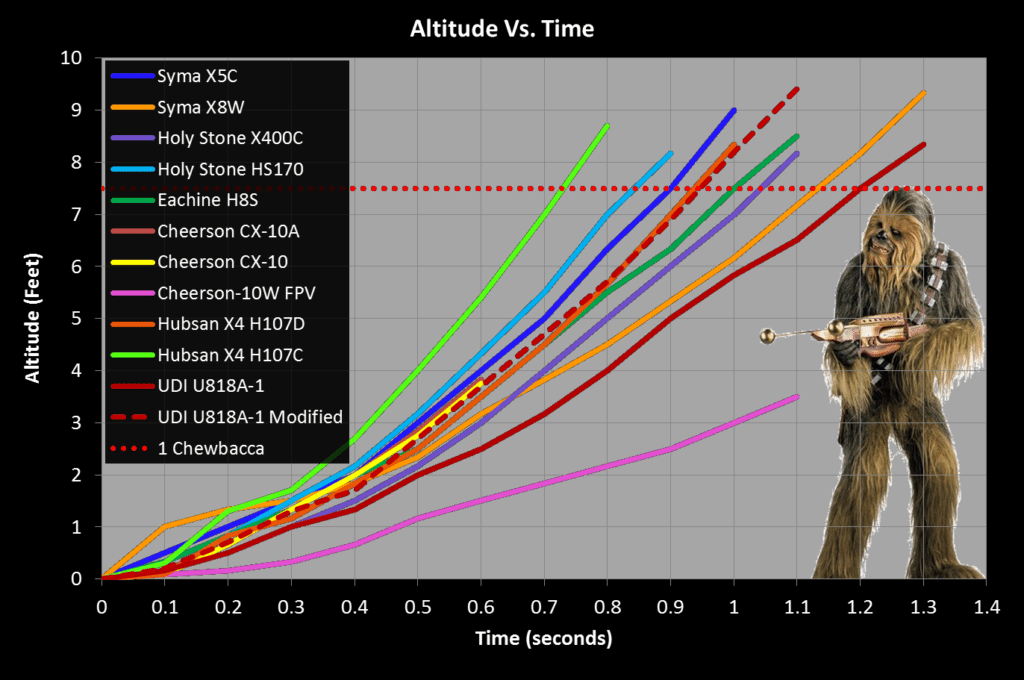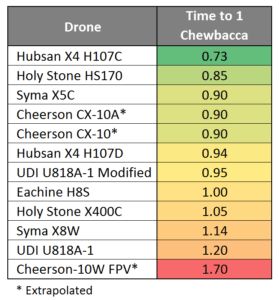
Here at Half Chrome we like to test the performance of our drones. A key metric for drones is their thrust-to-weight ratio. This tells you how much vertical thrust the props generate compared to the size of the drone. Drones with lots of thrust compared to their weight tend to be able to accelerate upwards faster, fly faster horizontally, and be capable of more aggressive maneuvers. That makes them more fun to fly! High end drones like the DJI Phantom will typically provide information about maximum vertical and horizontal speed, but those of you shopping for a less expensive drone will be wondering how your would-be-purchase will perform. Half Chrome is here to help. A vertical acceleration and speed test is the simplest and best way to see how these drones compare in performance.
Below we have a graph of altitude vs. time of 12 different drones. The drones we tested range from micro drones, like the Cheersons, to full-sized drones, like the Syma X8W. We generated this graph by looking at the video of drones taking off our launch pad from a dead stop. We went frame-by-frame to see how the drones stack up compared to each other. From the graph you can get a good sense of both vertical acceleration and top vertical speed. Keep reading to see the actual video of the testing we performed.

We put our favorite wookie on the graph because we use the time to reach 7.5 feet as a key metric. Why 7.5 feet? Because that’s Chewbacca’s height of course. Let’s have a look at how the drones stack up when we look at their time to get to 7.5 feet.

The mini drones stand out as being the fastest, particularly the Hubsan X4 H107C. As we noted in our review, that little drone is super fast. It performs like a racer but at a fraction of the price. In the middle of the pack are bunch of other micro, mini, and small drones, all clocking in between 0.9 and 1.05 seconds. We really like the Syma X8W, but as this graph shows, it is not the most powerful drone. Lower power is not a big problem for capturing video, you don’t want super jerky movements anyway. Just be careful flying in high wind, the drone may not be able to fight it very well. The UDI U818A-1 does not do very well in its original state. It comes with a relatively large prop guard that ads weight and drag. Don’t take this the wrong way, the prop guard it excellent for beginners, but it does slow the drone down. Luckily you can modify this drone once you are an expert at flying it, click here to find out how. Once the modification is complete there is about a 25% improvement in speed! Coming in in last place is the Cheerson CX-10W micro FPV drone. This is the cheapest option available for a first person video drone, but a camera is a bit much for this little drone to carry, and it has a big impact on performance.
Check out our video of the vertical take of tests
Disclosure:
This website contains affiliate links, which means I receive a commission if you make a purchase using these links. For full details visit the disclosures page.

Pingback: Half Chrome Hack: 818A-1 Gets a Facelift & Better Performance - Half Chrome Drones
Pingback: Hubsan X4 H107C -Super Quick Camera Drone - Half Chrome Drones